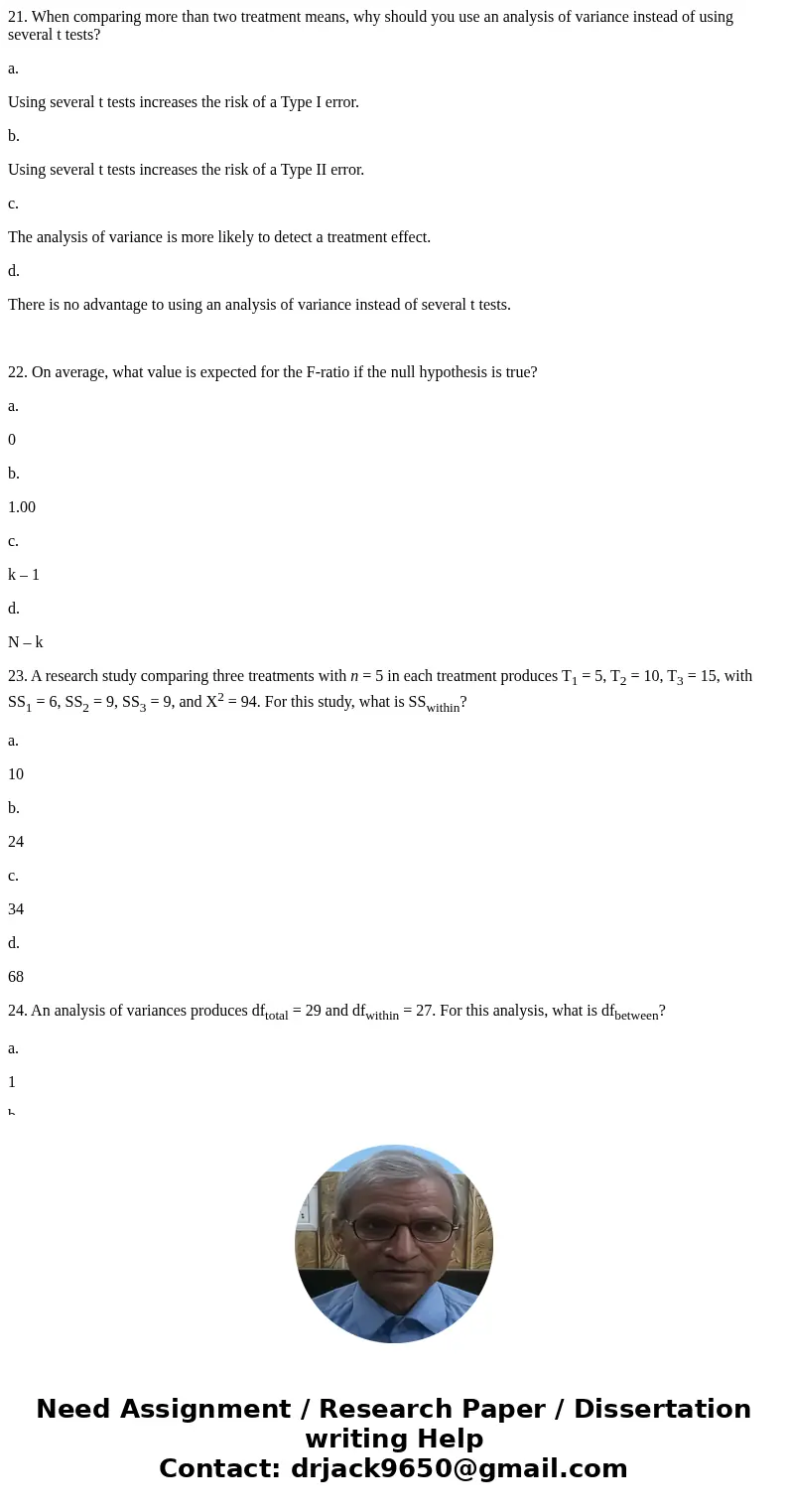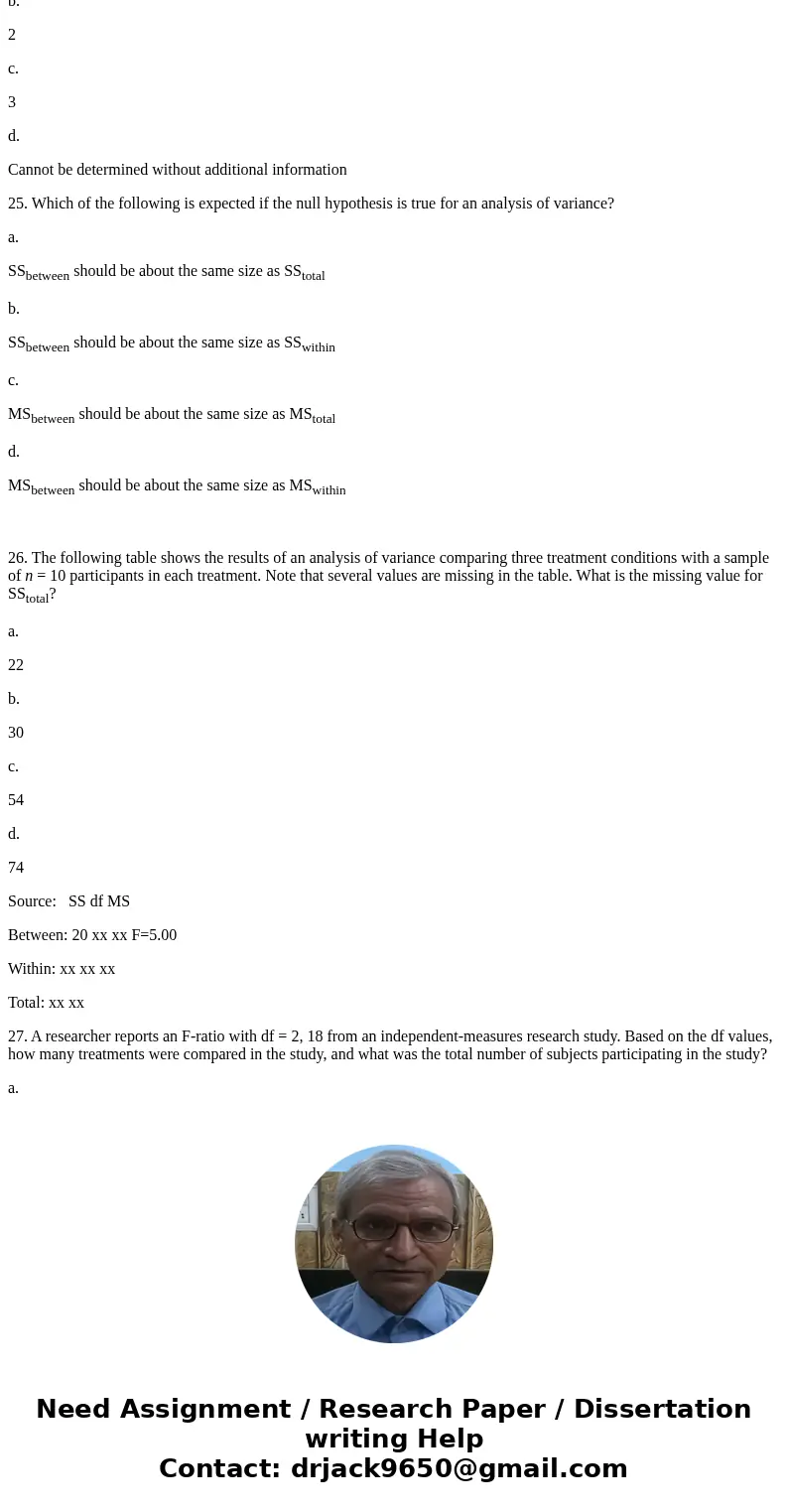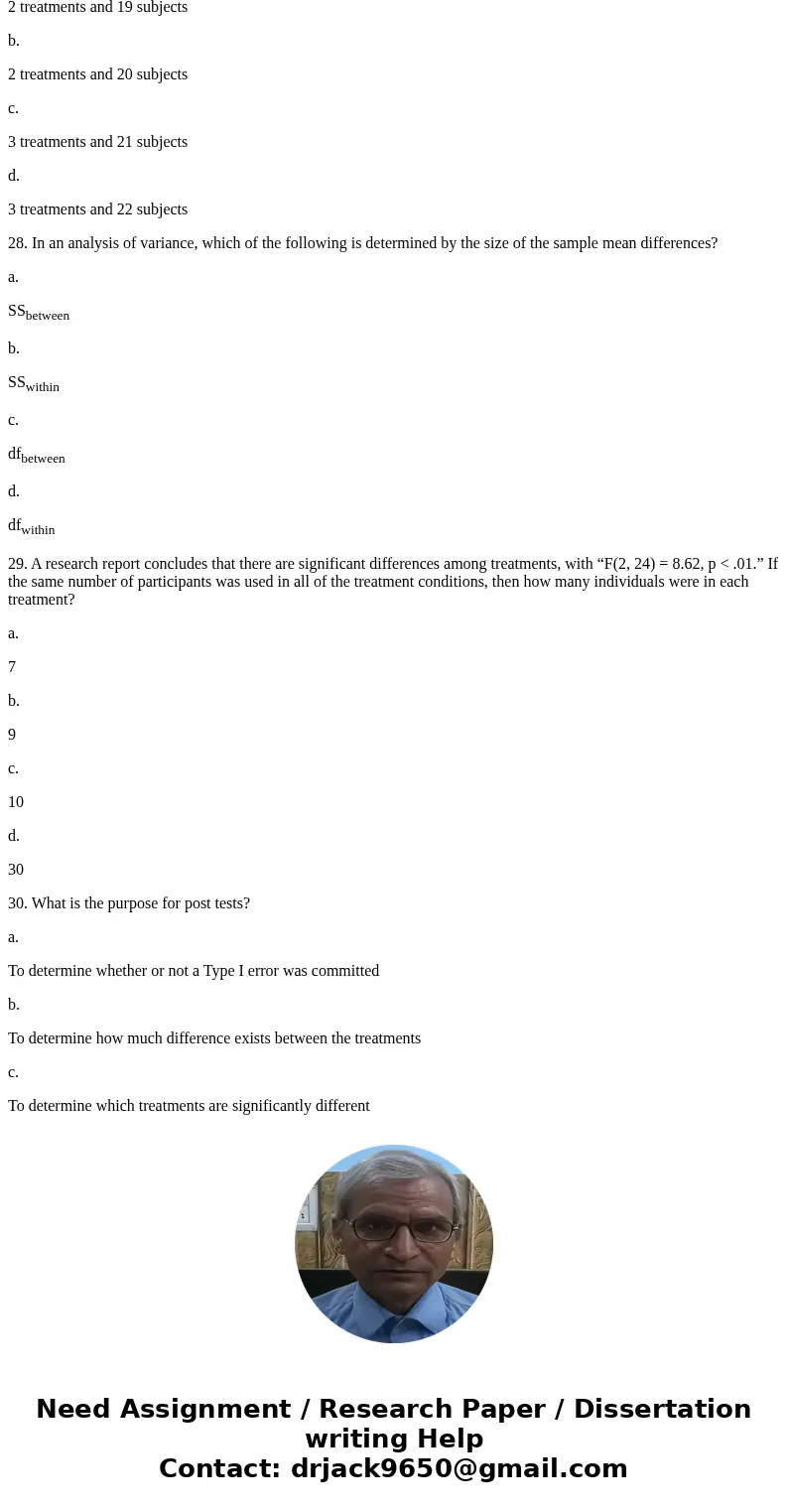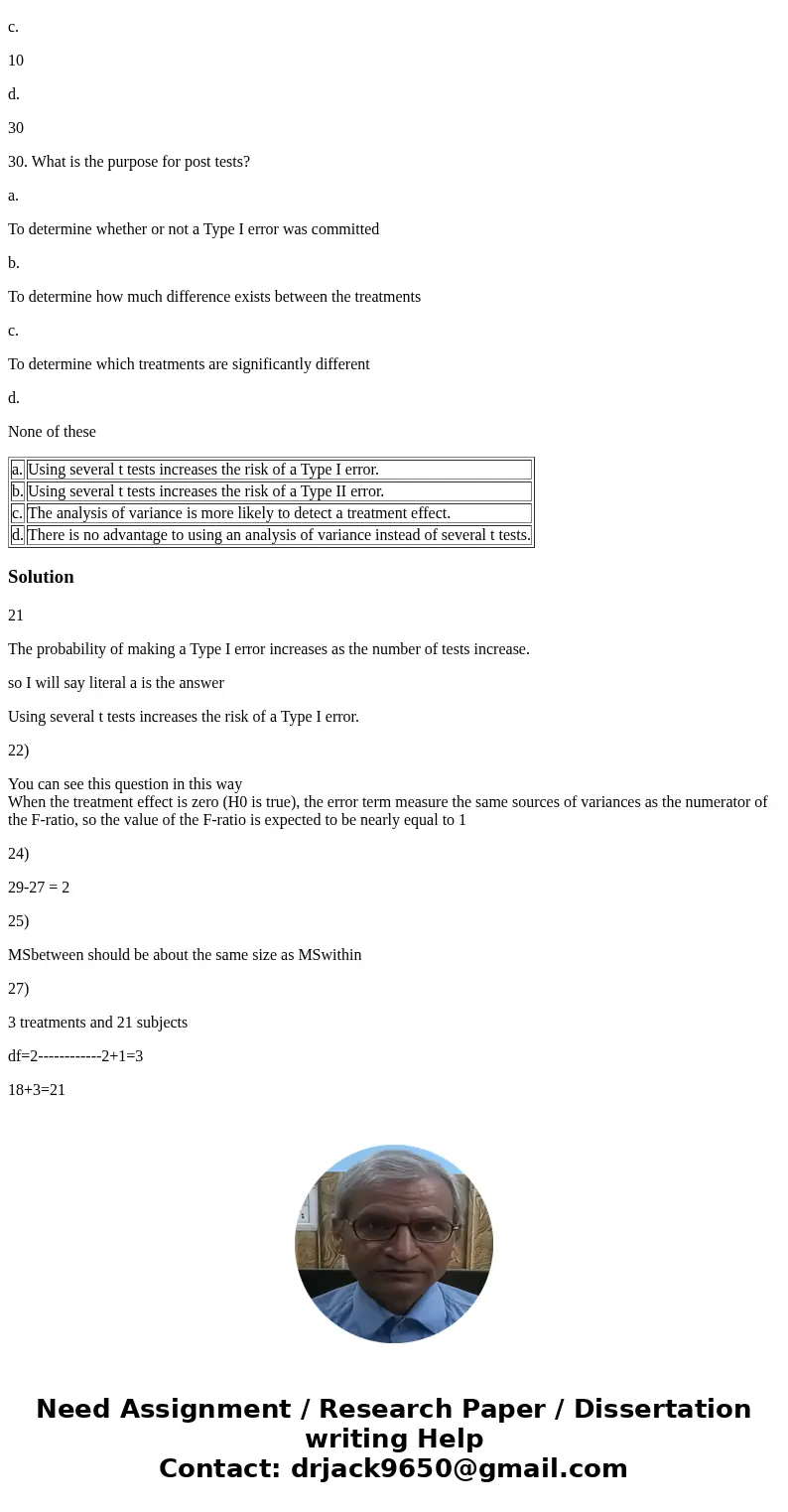21 When comparing more than two treatment means why should y
21. When comparing more than two treatment means, why should you use an analysis of variance instead of using several t tests?
a.
Using several t tests increases the risk of a Type I error.
b.
Using several t tests increases the risk of a Type II error.
c.
The analysis of variance is more likely to detect a treatment effect.
d.
There is no advantage to using an analysis of variance instead of several t tests.
22. On average, what value is expected for the F-ratio if the null hypothesis is true?
a.
0
b.
1.00
c.
k – 1
d.
N – k
23. A research study comparing three treatments with n = 5 in each treatment produces T1 = 5, T2 = 10, T3 = 15, with SS1 = 6, SS2 = 9, SS3 = 9, and X2 = 94. For this study, what is SSwithin?
a.
10
b.
24
c.
34
d.
68
24. An analysis of variances produces dftotal = 29 and dfwithin = 27. For this analysis, what is dfbetween?
a.
1
b.
2
c.
3
d.
Cannot be determined without additional information
25. Which of the following is expected if the null hypothesis is true for an analysis of variance?
a.
SSbetween should be about the same size as SStotal
b.
SSbetween should be about the same size as SSwithin
c.
MSbetween should be about the same size as MStotal
d.
MSbetween should be about the same size as MSwithin
26. The following table shows the results of an analysis of variance comparing three treatment conditions with a sample of n = 10 participants in each treatment. Note that several values are missing in the table. What is the missing value for SStotal?
a.
22
b.
30
c.
54
d.
74
Source: SS df MS
Between: 20 xx xx F=5.00
Within: xx xx xx
Total: xx xx
27. A researcher reports an F-ratio with df = 2, 18 from an independent-measures research study. Based on the df values, how many treatments were compared in the study, and what was the total number of subjects participating in the study?
a.
2 treatments and 19 subjects
b.
2 treatments and 20 subjects
c.
3 treatments and 21 subjects
d.
3 treatments and 22 subjects
28. In an analysis of variance, which of the following is determined by the size of the sample mean differences?
a.
SSbetween
b.
SSwithin
c.
dfbetween
d.
dfwithin
29. A research report concludes that there are significant differences among treatments, with “F(2, 24) = 8.62, p < .01.” If the same number of participants was used in all of the treatment conditions, then how many individuals were in each treatment?
a.
7
b.
9
c.
10
d.
30
30. What is the purpose for post tests?
a.
To determine whether or not a Type I error was committed
b.
To determine how much difference exists between the treatments
c.
To determine which treatments are significantly different
d.
None of these
| a. | Using several t tests increases the risk of a Type I error. |
| b. | Using several t tests increases the risk of a Type II error. |
| c. | The analysis of variance is more likely to detect a treatment effect. |
| d. | There is no advantage to using an analysis of variance instead of several t tests. |
Solution
21
The probability of making a Type I error increases as the number of tests increase.
so I will say literal a is the answer
Using several t tests increases the risk of a Type I error.
22)
You can see this question in this way
When the treatment effect is zero (H0 is true), the error term measure the same sources of variances as the numerator of the F-ratio, so the value of the F-ratio is expected to be nearly equal to 1
24)
29-27 = 2
25)
MSbetween should be about the same size as MSwithin
27)
3 treatments and 21 subjects
df=2------------2+1=3
18+3=21




 Homework Sourse
Homework Sourse